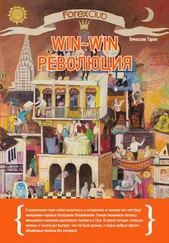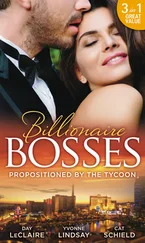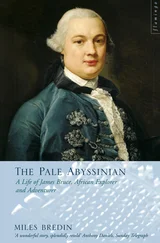HBITMAP hData = (HBITMAP)SendMessage(hList, LB_GETITEMDATA, (WPARAM)index, 0);
Like buttons, static controls are largely trivial, but for the sake or being complete I include them here. Static controls are usually just that, static, meaning they don't change or really do anything else very special, they're largely for displaying text to the user. However you can make them slightly more useful by assigning them a unique ID (VC++ assigns a default ID of IDC_STATIC , which is -1 and effectively means "No ID") and then setting the text at runtime to present dynamic data to the user.
In the example code, I use one to display the data of the item selected in the list box, assuming one and only one is selected.
SetDlgItemInt(hwnd, IDC_SHOWCOUNT, data, FALSE);
Example: dlg_three
Now don't get me wrong, this is a Tutorial , not a Reference , but some questions people ask SO often that I figured I might as well include them here.
In general, the only reason you'd want to do this is to simulate an link on a dialog box or some similar task, because otherwise you're probably just making your program ugly and hard on the eyes if you go adding a bunch of colors to the dialogs, but that doesn't stop people from doing it, and there are actually a few valid reasons, so here you go :)
Windows sends a variety of messages related to colours to your dialog procedure, and by handling these messages you can change what colour certain things are displayed in. For example, to change the color of the dialog box itself, you can handle WM_CTLCOLORDLG , to change the colors for a static control you handle WM_CTLCOLORSTATIC and so on.
First you can create a brush to use to paint the background and store it for later. the WM_CTLCOLORDLG and related messages will get called often during the course of your program, and if you created a new brush every time, eventually you would use up a great deal of RAM with dead brushes. This way we have more control, and we can delete it when the dialog is destroyed and we know we won't need it any more.
HBRUSH g_hbrBackground = CreateSolidBrush(RGB(0, 0, 0));
case WM_CTLCOLORDLG:
return (LONG)g_hbrBackground;
case WM_CTLCOLORSTATIC:
{
HDC hdcStatic = (HDC)wParam;
SetTextColor(hdcStatic, RGB(255, 255, 255));
SetBkMode(hdcStatic, TRANSPARENT);
return (LONG)g_hbrBackground;
}
break;
Notice the line that sets the background mode to transparent… if you leave this line off the background will be filled in with the brush you specify, but when the control draws the text it will get written over with the default background color! Setting the text drawing mode to transparent fixes this problem. The other option would be to SetBkColor() to the same color as our background brush, but I like this solution better.
Changing the colors on pretty much any other standard control works the same way, just look up the WM_CTLCOLOR* messages in your Win32 reference. Note that an edit control will send a WM_CTLCOLORSTATIC if it is read only, and WM_CTLCOLOREDIT if it isn't.
Giving the Dialog an Icon
A fairly simple task, you just need to send WM_SETICON to your dialog. Since windows uses two icons however, you need to call it twice, once for the small icon displayed in the corner of the window, and once for the large one displayed when you hit Alt-Tab. You can just send the same handle both times unless you have multi-sized icons.
To just set the default application icon, you can use the following code:
SendMessage(hwnd, WM_SETICON, ICON_SMALL, (LPARAM)LoadIcon(NULL, MAKEINTRESOURCE(IDI_APPLICATION)));
SendMessage(hwnd, WM_SETICON, ICON_BIG, (LPARAM)LoadIcon(NULL, MAKEINTRESOURCE(IDI_APPLICATION)));
When you substitute your own icon resource for the default, remember to change the HINSTANCE parameter of LoadIcon() to your applications instance (you can get it by calling GetModuleHandle(NULL) if you don't have it stored from WinMain() ).
Why Doesn't my Combo Box Work?
An all-too-common problem is people adding a combo box to their dialog and they can't figure out why the list doesn't show up when they run their program and click the little arrow. This is understandable, since the solution is not very intuitive.
When you create a combo box and specify it's height, you are actually specifying the entire height, drop-down list included, NOT the height of the control when it is collapsed which is determined by the system based on the size of the font used.
For example, giving the control a height of 100 pixels, the system sizes the control itself to the default (lets say 30 in this case), and when you click on the arrow, the drop down list would be 70 pixels high, for a total of 100 pixels.
If you use the VC++ resource editor to place the combo on your dialog, you will notice you can't size it vertically. Unless you click on the arrow in the editor, and it will then change the focus rectangle to indicate you are sizing the dropdown list, and you can set the height to whatever you want.
What about all the other controls!
Well I could give examples of all of the other controls, but that's what MSDN and Petzold are for :) If you can't figure out how to use them, you probably need to re-read some parts of this tutorial, or get a book which will explain things more thouroughly. If you need a good jumping off point in MSDN (I know it can be hard to navigate somtimes) try this link, it has a number of links at the bottom to user interface topics.
MSDN: Windows User Interface – Controls
Creating a simple application
App Part 1: Creating controls at runtime
Example: app_one
I thought that since an example on creating controls on the fly, although usefull, would be quite pointless unless the application actually did something, so in this entry I will start the workings of a text editor and build upon it untill we reach a nearly useful program that supports opening, editing and saving text documents.
The first step, which this particular page covers will be simply creating the window and the EDIT control that will serve as the center of our program.
Starting with the skeleton code from the Simple Window application we add a #define as our control ID and the following two message handlers into our window procedure:
#define IDC_MAIN_EDIT 101
case WM_CREATE:
{
HFONT hfDefault; HWND hEdit;
hEdit = CreateWindowEx(WS_EX_CLIENTEDGE, "EDIT", "", WS_CHILD | WS_VISIBLE | WS_VSCROLL | WS_HSCROLL | ES_MULTILINE | ES_AUTOVSCROLL | ES_AUTOHSCROLL, 0, 0, 100, 100, hwnd, (HMENU)IDC_MAIN_EDIT, GetModuleHandle(NULL), NULL);
if (hEdit == NULL) MessageBox(hwnd, "Could not create edit box.", "Error", MB_OK | MB_ICONERROR);
hfDefault = GetStockObject(DEFAULT_GUI_FONT);
SendMessage(hEdit, WM_SETFONT, (WPARAM)hfDefault, MAKELPARAM(FALSE, 0));
}
break;
case WM_SIZE:
{
HWND hEdit;
RECT rcClient;
GetClientRect(hwnd, &rcClient);
hEdit = GetDlgItem(hwnd, IDC_MAIN_EDIT);
SetWindowPos(hEdit, NULL, 0, 0, rcClient.right, rcClient.bottom, SWP_NOZORDER);
Читать дальше








